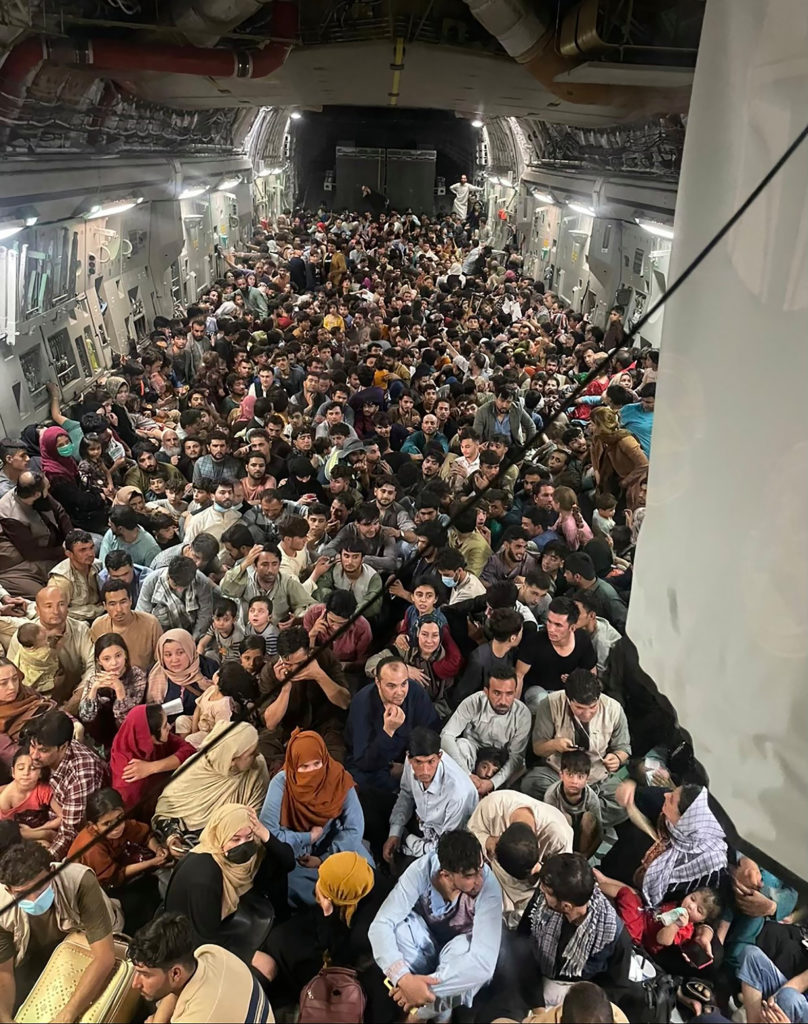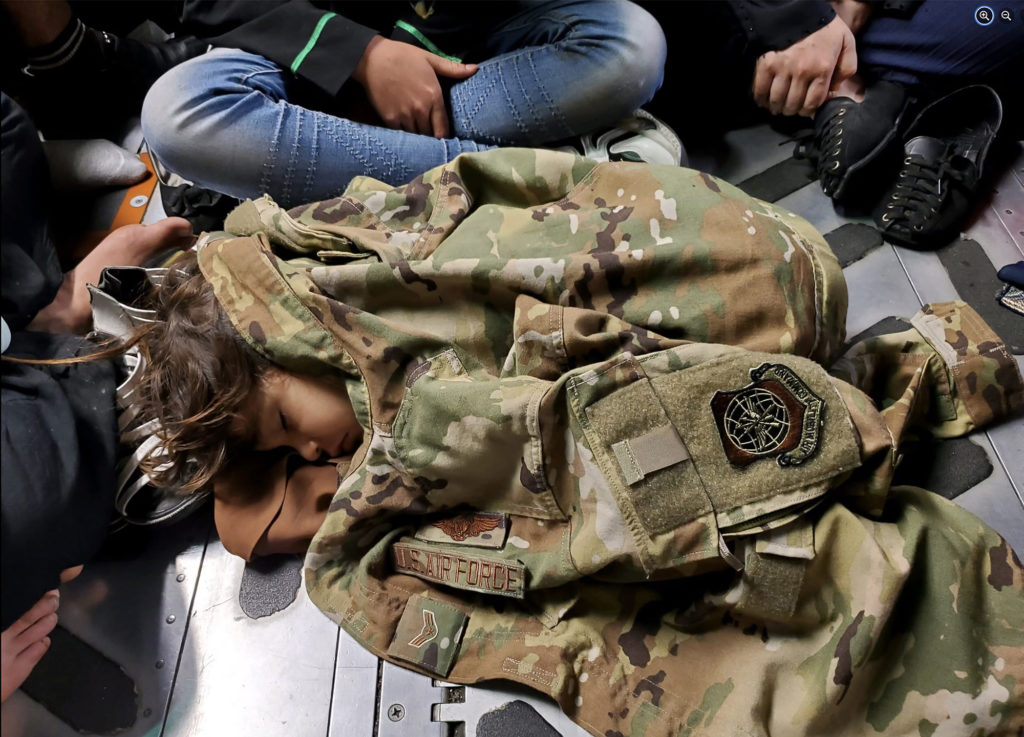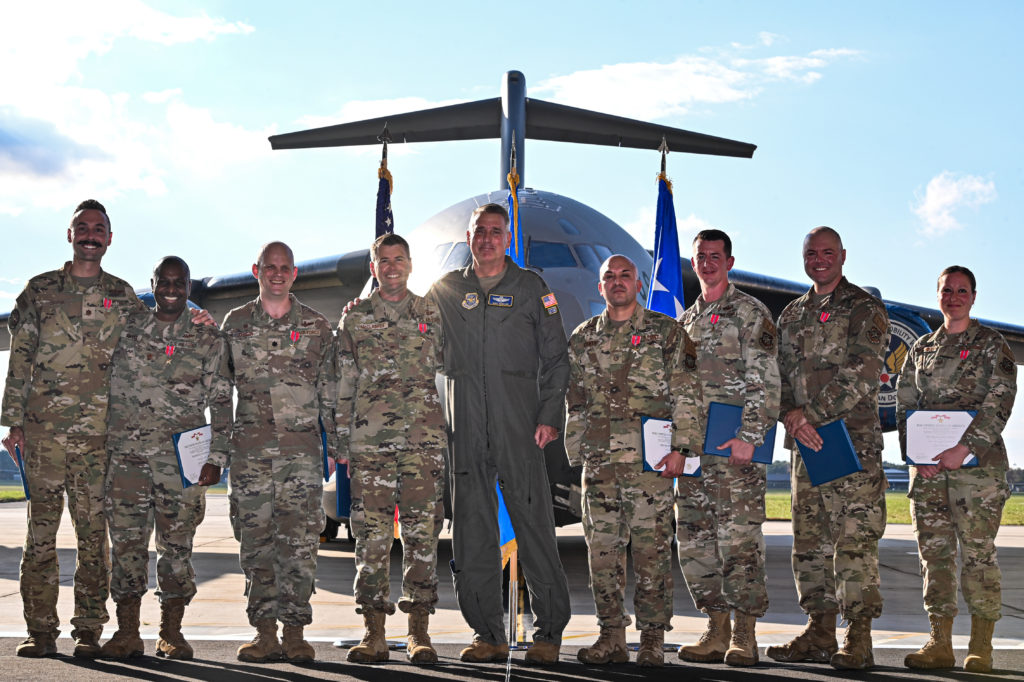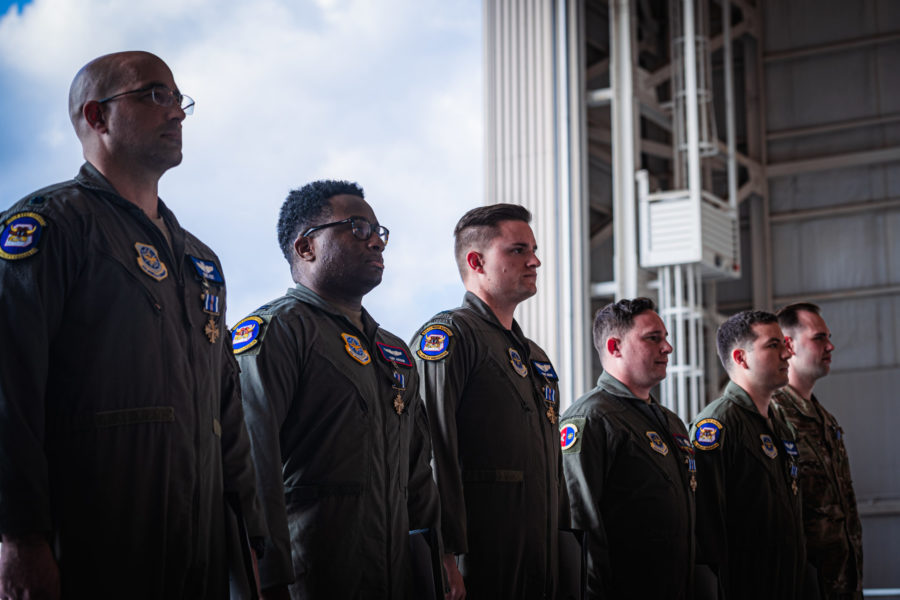Ten Airmen, including the C-17 crew who flew a record-breaking 823 people to safety during the noncombatant evacuation out of Afghanistan last August, received the Distinguished Flying Cross on Nov. 1.
Every member of that famous C-17 flight, call sign REACH 871, received a DFC with a “Valor” device, denoting “an act or acts of heroism by an individual above what is normally expected while engaged in direct combat with an enemy of the United States … with exposure to enemy hostilities and personal risk.”
Air Mobility Command boss Gen. Mike A. Minihan awarded the Distinguished Flying Crosses, the military’s fourth-highest award for heroism, along with eight Bronze Star Medals in a ceremony at Joint Base McGuire–Dix-Lakehurst, N.J.
The awards are part of a larger batch of medals and decorations approved by AMC in October for Operation Allies Refuge, the name given to the evacuation from Hamid Karzai International Airport in Kabul, Afghanistan, as the Taliban seized control of the government and thousands of desperate Afghan nationals, American citizens, and individuals from partner nations scrambled to leave the country.
Members of the 621st Contingency Response Wing, who received the Bronze Star Medals given Nov. 1, helped to restore order and secure the airfield, and began directing air traffic, with the help of other units. The 621st Contingency Response Group will also receive the Gallant Unit Citation.
At HKIA, chaotic scenes unfolded Aug. 15, as Afghan citizens breached the airfield, with some attempting to climb onto U.S. Air Force C-17s.
Before that, however, the crew of REACH 871, from the 305th Air Mobility Wing, made the decision to take off with as many Afghan evacuees as possible, despite the lack of an official manifest, due to the deteriorating security situation.
The flight quickly made international headlines—audio of the crew informing an Air Force control center that they had 800 passengers on board circulated on social media, as did a photo showing hundreds of evacuees crammed into the C-17’s cargo bay.

AMC initially said 640 people had been rescued, before revising that number to 823 after counting the children on board the flight. That far exceeded the previous record of 670, and more than doubled the typical maximum of about 300 people when the C-17 is outfitted for large passenger loads.
The flight also produced the photo of a young Afghan child sleeping beneath an Airman’s jacket—a powerful image that went viral and has been highlighted by many Air Force leaders as symbolic of the service’s contribution to the evacuation.
The Airman to whom the jacket belonged, now-Senior Airman Nicolas Baron, was one of seven crew members on REACH 871 who received the Distinguished Flying Cross. The others were aircraft commander Lt. Col. Eric Kut, pilots Capt. Cory Jackson and 1st. Lt. Mark Lawson, loadmaster Tech. Sgt. Justin Triola, and flying crew chiefs Staff Sgt. Derek Laurent and Senior Airman Richard Johnson.

Three other Airmen involved in the evacuation received DFCs from Minihan, all with the “Combat” device: Capt. Andrew Perrella, a C-17 pilot, Capt. Jedd Dillman, a flight nurse, and Master Sgt. Matthew Newman, a respiratory therapist.
Dillman and Newman are the first aeromedical evacuation Airmen in AMC history to receive the Distinguished Flying Cross, and Laurent and Johnson are the first two flying crew chiefs, according to an AMC release.
The following Airmen from the 621st Contingency Response Wing received Bronze Star Medals, which are awarded to those who distinguish themselves “by heroic or meritorious achievement or service, not involving participation in aerial flight, in connection with military operations against an armed enemy”:
- Col. Colin McClaskey
- Lt. Col. Joshua Johnson
- Maj. Michael Sattes
- Maj. Adam Cooper
- Master Sgt. Dustin Sanderlin
- Master Sgt. Bryan Masters
- Master Sgt. Brian Cantu
- Tech. Sgt. Gabrielle Di Clementi

